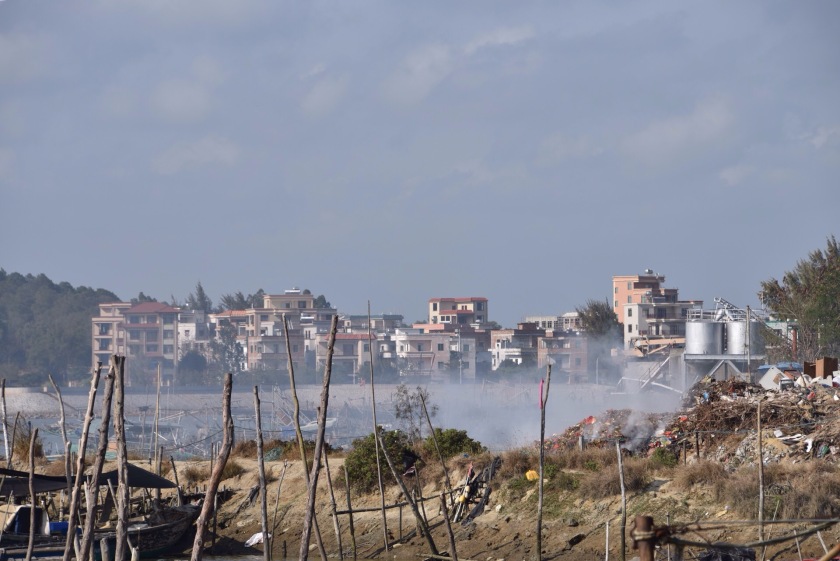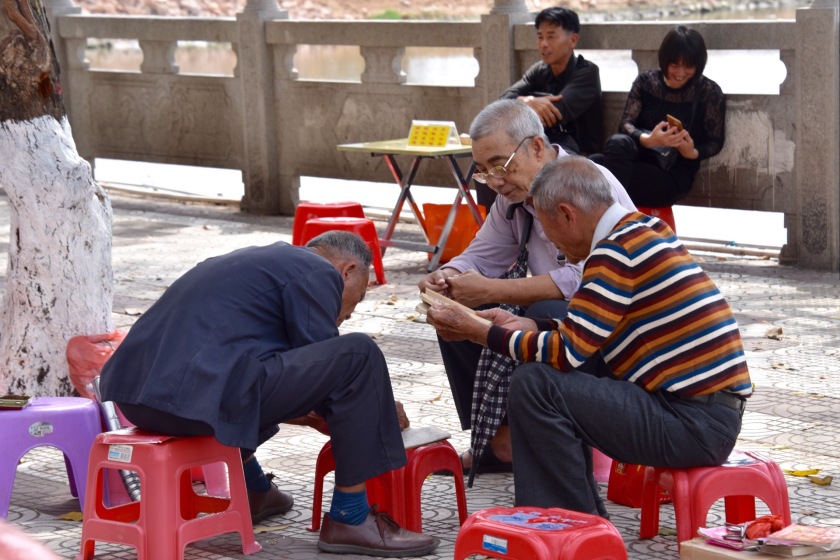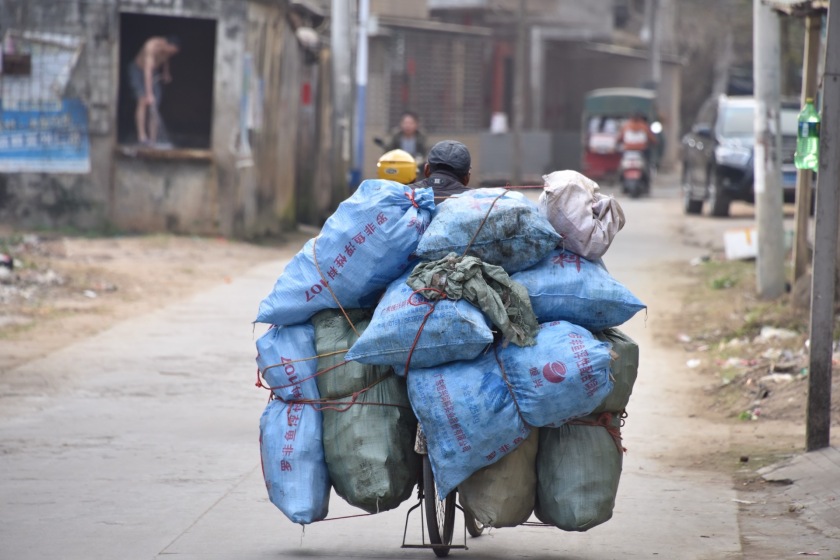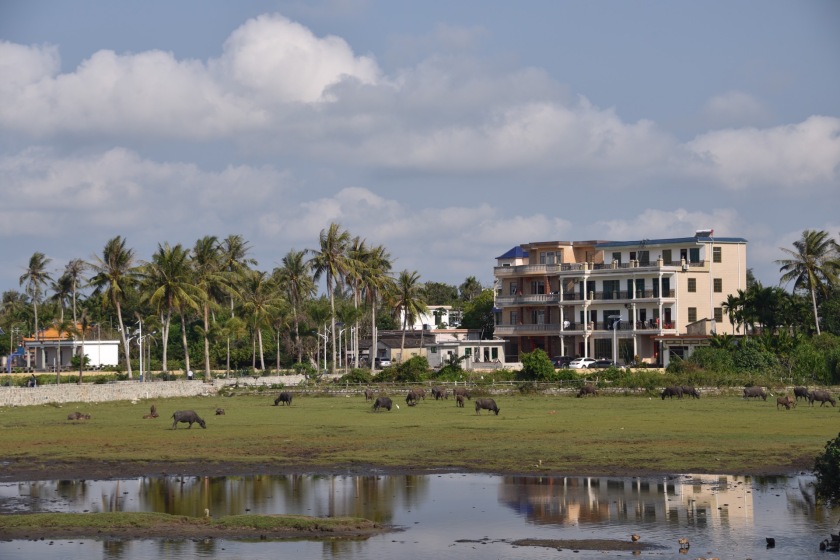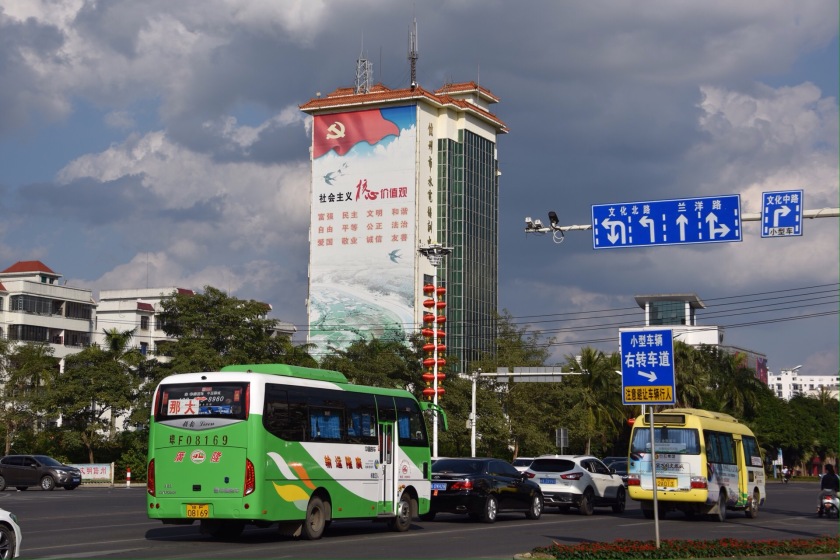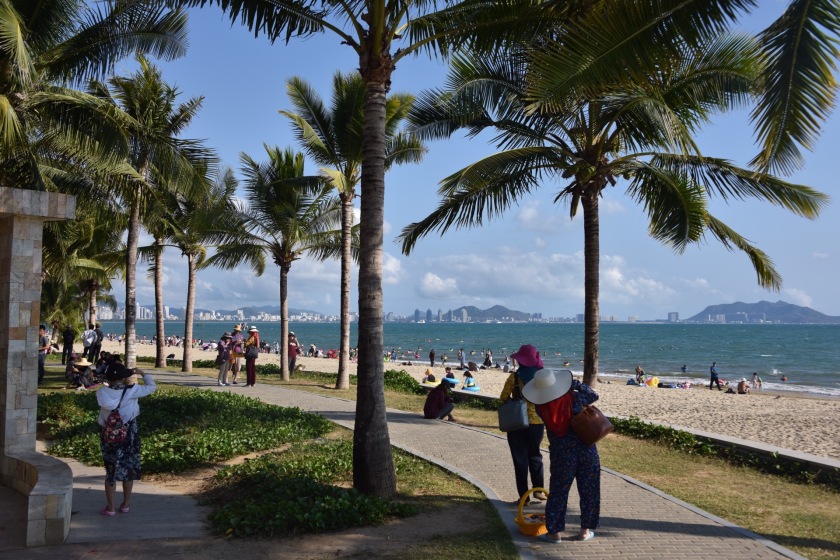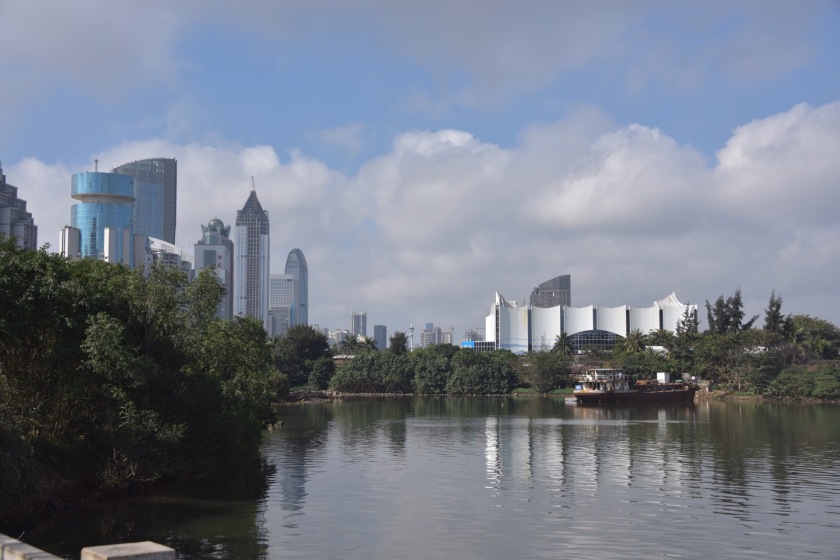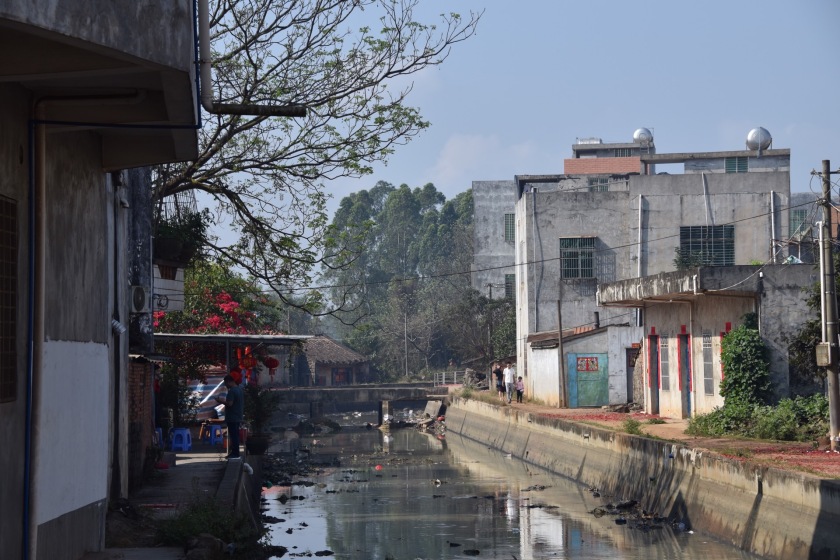
I don’t go straight from Zhongshan southwards, because the mountains there suggest that the route could be uncomfortable. Instead, I want to go in an arc along the coast to Zhuhai, my last stop before the Macau border. To the east, a broad traffic artery leads away from the city center and only after a good 12 kilometers then as S111 further south. Out of town there is the now familiar picture, with only a minor change: housing along the expressway, here a little off the actual asphalt belt. In addition to the motorway and expressway, there is also a new railway line at Nanlang.
A little further south there is the opportunity to switch to a side route, at least temporarily, and here I can enjoy cycling again with less traffic. The weather is getting better and better and the road winds through a hilly landscape for a few kilometers. After a short time, signs indicate a museum: The Dr. Sun Yat Sen Museum extends west of the street in the shape of almost the entire village of Cuiheng. This is where the founder of the Republic of 1921 most recently had a residence and is also where he was born. The crowd of visitors in front of a security check at the entrance to the apparently extensive grounds is quite large.
After a few kilometers, the road leads back to the southbound motorway and then runs parallel to it, only a few meters away. At an underpass that is only approved for small vehicles, I finally get further east to the coast.
In Shangzha I spontaneously stop at a restaurant and have a noodle soup made with vegetables and chicken. It is Muslims who run this small restaurant on the edge of a commercial area and they make their noodles by hand in the traditional way, just as I saw it a few weeks ago in Bo’ao in Hainan. The boss gazes inquisitively at my bicycle parked in front of his entrance, then looks at what I’m writing in my diary while his son is in the kitchen preparing the simple meal for me.
These are real pasta that were used in the soup, not the usual rice noodle or vermicelli.
Through Shangzha and Xiazha I drive on and come back to the S111 and after a short distance along this straight, newly built wide road to a wide bay, Quanwan Bay, on the northern bank of which a whole chain of snow-white skyscrapers stretches.
After bypassing the foothills of a hill, the bay is followed by Xiangzhou Bay, which extends much further south, where there is also a small fishing port, protected by the offshore island of Yeli Island.
In the afternoon sun, workers are busy preparing flower beds for planting along a promenade.
This outermost district of Zhuhai consists largely of holiday apartment blocks, which are secured behind high fences in the first row on this spacious promenade, with a view of the snow-white facade of an architecturally unusual concert hall which is located on this island.
I then leave the coastal area at this part of the bay and drive from here towards the city center, because my accommodation is at the opposite end of the city and about 8 km away.
Again, I have to take a detour because, as it turns out, the S366 bridge over the Qianshan River, which would pretty much lead straight into the neighborhood with my pre-booked hotel, is again closed to bicycles. So I have to drive a few kilometers along the river bank to a more makeshift bridge, which then leads from a different direction and right through a construction site. Not bad either, but it takes me a while to find the hotel, which is somewhat hidden in the district.
Ultimately, however, I find the Lim Hotel and later in the evening the somewhat angular and confusing quarter with its many small shops is no longer confusing.
For dinner in the evening, rice with celery and Chinese spinach plus an egg pancake, I drink a Tsingtao beer once, as a farewell to China, which I want to leave tomorrow via the Macau border.
But at the border I am rejected on my bike, so all discussions with an overseer and with one of the border policemen are of no use. The bicycle is not considered a vehicle, I am supposed to load it as it is, like hundreds of other pedestrians, through a large check-in, control and customs hall. The Gonbei port looks like a huge station building and a friendly policewoman explains to me when I ask that I can go through there with my bike.
Even in front of the building, travelers are divided into several corridors, at the end of which all luggage is examined. So unload all bags and put them in the scanner, the bike is of no interest. Then it goes into the large hall, where the passport or ID card control is mainly automated. But not for foreigners. In front of the control counter, I have to push my bike through the narrowly fenced-in corridor, as well as a few hundred meters behind again on the Macau side. My passport and visa are examined, the computer then takes a while to allow the official at the counter to stamp the exit stamp in my passport.
Then comes the Chinese customs, again I have to unload the bags and put them in the next scanner. But there are no complaints.
On the other side of the large hall there is not even a stamp in the passport, just a slip of paper. Then suddenly I’m in Macau – a small bus station, the sun is now pushing harder through the clouds again.
I sit on a bench, take off my thin jacket. A wall of unadorned eight- to fourteen-story apartment buildings rises in front of me, between which the narrow street disappears, on which I plunge into the narrowness of this city shortly thereafter.
Now I have to get used to one-way streets, to sudden changes of direction and sudden climbs behind the next corner – and to left-hand traffic. That is still the slightest problem, but the one-way regulation combined with the narrowness of the streets slow me down several times.
The narrow buildings directly along the streets, where often only a narrow footpath offers minimal distance, makes the city very confusing. I get a brief overview in a side street that leads steeply up a hill about 500 meters behind the border to a small park and the remains of an old Portuguese fort. The ‘Fortaleza da Mong Ha’.
All around very different high-rise buildings and in the distance the silhouette of the ‘Macao Tower’ and the casino ‘Gran Lisboa’.
It is less than 2 kilometers to my hotel here in Macau, the Guia Hotel, which is located halfway below the lighthouse of the same name at a further elevation, a little further south, but because of the one-way streets it takes me about half an hour to get there.

























